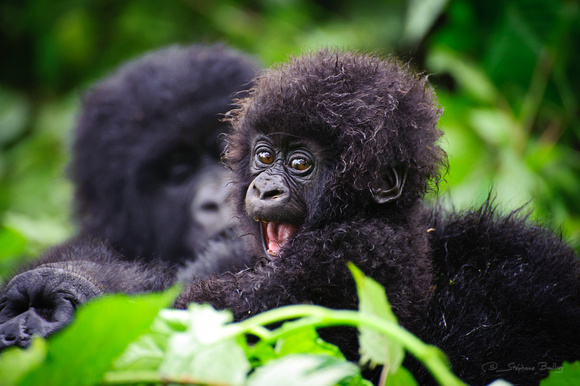
HOW MOUNTAIN GORILLAS ADAPT TO THEIR NATURAL ENVIRONMENT
There are less than 2000 mountain gorillas remaining in the World (there are precisely 1063), dwelling within the Tropical rainforests of four African National Parks in East and Central Africa. The Virunga Conservation Area, comprising of three Parks-Mgahinga Gorilla National Park in Uganda, Volcanoes National Park in Rwanda and Virunga National Park in the Democratic Republic of Congo shelters about half the population of these Great Apes while the remaining ones live in the densely forested and misty slopes of Bwindi Impenetrable National Park.
Just like their name, Mountain gorillas live in the dense Rainforests high in the Mountains at altitudes of 2400 to 4000 meters above sea level. The habitats of these Giant Apes have low temperatures sometimes dropping below freezing. Few animals can survive in such an environment and also given their 98.2% DNA with humans, anyone would wonder how Mountain gorillas adapt in such an environment. Therefore, the following are some of the ways how mountain gorillas adapt to their natural environment;
Herbivorous Nature
Mountain gorillas are herbivores and their menu usually comprises of fruits, leaves, roots, plant stems, thus making it easier to find food in the thick jungles. If they were carnivores that need to hunt through the thick forest, survival would probably be difficult. Mountain gorillas living in the thick vegetation also saves them the burden of moving to far places to find their food, because it is readily available in every corner of the rainforest.
Unique Leadership system
Mountain Gorillas have extraordinary leadership system with silverbacks being the heads of gorilla families/groups and this has enabled them to live peacefully and avoid conflicts. The dominant silverback determines where the family nests, forages in addition to deciding the wake up time. Not only that, he is the only one allowed to mate with the family’s females and any silverback or blackback that is not okay with these arrangements can leave and form another group/family.
Mountain Gorillas use their specialized fingers to gather and prepare food
Mountain Gorillas have long arms with huge muscles for locomotion and their fingers are specialized to gather and prepare what to feed on. For instance, they use their fingers to peel fruits, uproot roots and break stems in addition to using them for fighting any dangers to the family., the silverback does to protect and ensure safety of his family/group.
Longer and Thicker Fur
The Longer and thick fur on Mountain gorillas help them survive their natural environment where temperatures sometimes drop below freezing. The fur keeps them warm in the Tropical rainforests high in the mountains and also protects them from irritating insect bites.
Use of Body Language and Vocalizations for socialization
Mountain Gorillas use vocalization and body language for socializing. They use expressive faces to convey needs, emotions and interests to their colleagues. Body language and vocalization are some of the breathtaking behavioral Gorilla adaptations that will inspire you.
Their secretive Nature
Mountain Gorillas are generally secretive and this enables them to quickly perceive danger in their natural environment and walk away to avoid problems. These Great Apes are always shy, calm and peaceful with few individuals being brave enough to face the threat.
To watch mountain gorillas, visitors must possess valid gorilla permits that cost $400 for the Democratic Republic of Congo, $600 for Uganda and $1500 for Rwanda. Gorilla Treks are conducted all year round although most visitors prefer the dry season-December to February as well as June to September when hiking trails and forest floor is drier, not muddy or slippery. Conditions in the dry months generally favor gorilla treks across the three countries.

This Post Has 0 Comments